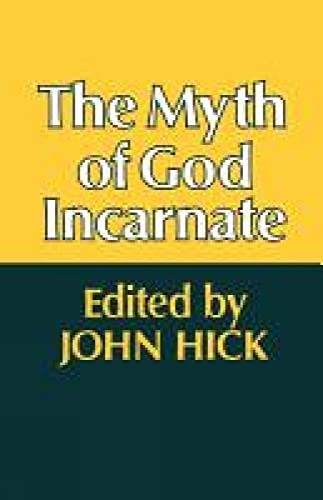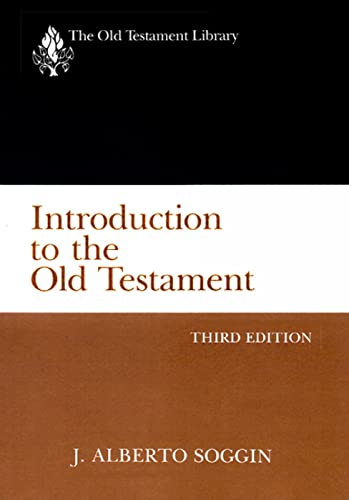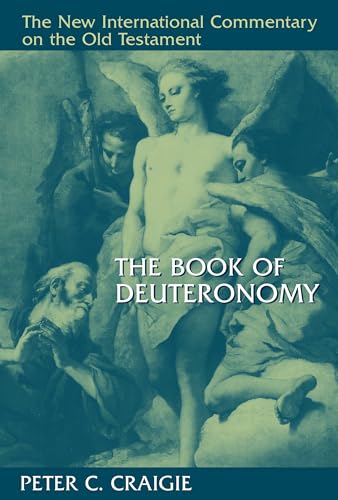This is an exceedingly difficult book to review fairly, for a number of reasons. First, it is not a unified whole, but a series of essays by seven different people whose distinctiveness as scholars and as individuals is often more striking to the reader than the similarities which have here drawn them together. Second, it is impossible to ignore either the impact which the book has made in the press or the reactions which it has provoked, most notably the reply by Michael Green and others (The truth of God incarnate).
The authors of The myth, or at least the publishers, have been concerned to emphasize that theirs is a popular book, intended for the intelligent layman, as well as for the more specialized scholar. It was evidently hoped that the book would make a splash in the media along the lines of Honest to God, but the complexity of its style and argument, not to mention its high price and the almost uniformly hostile reaction in both the secular and the religious press would seem to have dashed these hopes.
This in itself creates a difficulty, since the authors made ‘no pretence to originality’ (p. x) and once out of the limelight, where its title has a certain shock value, the book has little to commend it. As we might expect, the authors simply assume that all honest and thoughtful people have been waiting anxiously for their work to appear; the existence of large numbers of ‘fundamentalist’ Christians to whom their every chapter is anathema is occasionally acknowledged, only to be dismissed as an irritating archaism. Perhaps nothing testifies more clearly to their detachment from reality than the fact that as the evangelical flood-tide continues to erode the sandy foundations of their intellectual house, the authors of The myth can go on disregarding evangelical scholarship so completely.
More seriously, their methods and assumptions are open to grave criticism. The word ‘myth’ is never defined, although it is presumably the central concept in the book, and the reader is left unconvinced that his standard definition of the word as ‘fable’ has in any way to be modified or abandoned. Great efforts are expended to denounce orthodoxy (itself a ‘myth’, p. x) and every opportunity is taken to highlight the diversity of the New Testament sources, with little awareness that much of the argument here is at cross-purposes. The diversity of the witness is a diversity of experience, which is inevitable when more than one person is involved; orthodoxy, however, is concerned not with subjective experience, but with the objective content of Christian teaching. It is the same thing which men experience in different ways—an elementary observation which nevertheless seems to have escaped the authors of The myth.
We must also be wary of their plea that ‘the ideas and arguments in this book be judged on their merits rather than by their conformity to some previous stage of Christian development’ p. x). But if a man’s professed aim is the overthrow of an ancient and universally accepted creed, the merits of his argument can hardly be assessed without careful reference to the object of his attack; after all, we are entitled to assure ourselves that the new product is at least as good as, if not indeed a positive improvement on, the one we are being asked to reject. On this score, The myth must be classed a failure.
The book itself is divided into two sections of uneven length, the first of which deals with the sources of incarnation doctrine (120 pages) and the second with its development (80 pages). None of the authors has contributed to both sections, which is unfortunate, but the official division is far from watertight. The sources section consists of two essays by Frances Young and two by Michael Goulder. To her credit, Mrs Young avoids sensationalism and presents a reasonably competent potted history of early christological development. She sees the limitations of titular christology (p. 19) and recognizes the importance of religious motives behind the classical credal formulations (p. 30), an observation which instantly puts her contribution in a different class from the rest. Unfortunately, however, she seems to be unaware of the crucial difference between the New Testament and later Christian writings which treated it as source material. As a result, she fails to see that a term like ‘christology’, appropriate enough when applied to Athanasius, cannot be used of St Luke or St Paul in the same sense. She is also unable to distinguish the growth of Christianity from the collapse of Hellenistic religion into gross superstition, and fails to realize that it was precisely because the Christian faith stood out from this welter of pious confusion that it survived and eventually triumphed over it. Her belief that Christianity emerged from a climate of syncretistic Judaism simply cannot be sustained from the facts.
What is true of Mrs Young is even more true of Michael Goulder’s two essays, the second of which is easily the most extraordinary piece in the whole book. Goulder attempts by the most fantastic ‘proofs’ to show that it was a tradition of Samaritan ‘gnosticism’ which produced the idea of divine incarnation and applied it to Jesus. Virtually every New Testament reference to Samaritans is pressed into service in support of this theory, and one can only wonder that the woman at the well of Sychar should have had to ask Jesus so many questions, if the people of her village were such ingenious theologians. Perhaps a further essay will enlighten us on this point. As for his appreciation of the New Testament witness to Jesus in general, the following (p. 59) may be regarded as typical of Goulder’s approach:
‘On Easter Sunday morning Peter achieved … a conversion experienced in the form of a vision. The amazing ‘truth’ dawned on him, to solve all his problems: Jesus was not dead after all—he had risen again, he was raised to God’s right hand in heaven (note the anachronism), he would soon return to establish his kingdom in power. Peter’s experience was soon told to the others, and so great is the power of hysteria within a small community that in the evening, in the candlelight, with fear of arrest still a force, and hope of resolution budding in them too, it seemed as if the Lord came through the locked door to them, and away again’ (pp. 59, 60).
Turning to the second section we feel we have come to the real point of the book, though quite what that point is continues to elude us on every page. Leslie Houlden’s essay is especially difficult to grasp, perhaps because its title, ‘The creed of experience’, betrays the sort of confusion between the objective and the subjective elements in our religious life which we noted earlier. He recognizes the inappropriateness of using a post-Kantian world-view to analyze the thought of St Paul, yet never questions its validity (p. 129). At one point he even says, ‘In order to explain, let us boldly dogmatize’ (p. 127), a phrase which by a nice irony might have served as a motto for the early fathers whom he so freely criticizes for having done just that.
Don Cupitt’s essay concentrates on christological development in England in the last century, and despite references to such people as John of Damascus and Theodore the Studite(!), is distinguished chiefly by its parochialism. Gore is an important theologian not because he was a great mind, but because he belonged to the inner circle of upper-class Englishmen (p. 134), and the notion that doctrine cuts people off from reality (p. 141) is scarcely conceivable outside the English public-school system, which is notorious for its propensity to divorce theory from practice. Cupitt’s failure to consider, or even mention, christological developments outside his own circle (even the Germans seem to be almost non-existent) is a weakness which is inexcusable in a serious essay of this kind. Less emphasis on mediaeval religious art (p. 144) and more on serious theology outside England would have made this a much more solid piece of work.
Maurice Wiles’ contribution on ‘Myth in theology’ should probably have come first in the book, since in many ways it deals with the crucial issue, although not very satisfactorily. Wiles seeks to separate the idea of myth from the categories of truth and falsehood, but although he makes a fair point when he argues that myths communicate universal truths which may or may not be tied to particular events, when dealing with the incarnation he is not really able to come to terms with the problem of historicity. Wiles refuses to say explicitly whether or not he believes this myth to be historical fact, but his true opinion is not difficult to discern. A historical fact of transcendental significance must inevitably employ the language of metaphysics, and this Wiles rejects in his introductory article (p. 9). The link between theological truth and the historical Jesus is the result not of historical events in his life but of converging traditions—in other words, it is an accident of history, not a factual part of it.
The concluding essay by John Hick examines the implications of incarnation-mythology for interfaith dialogue, and we are not surprised to discover that Hick’s ultimate aim is the reconciliation of the ‘great’ world religions. The uniqueness of Christianity is impossible to defend, according to him, and Jesus must take his place in a hall of honour (one could hardly call it a pantheon) of great religious thinkers. Experienced readers will recognize the old argument, and will conclude that there is no more positive evidence for it now than there was when the primitive gnostics suggested much the same thing.
An epilogue by Dennis Nineham completes the collection. Oddly, it is probably both the most and the least perceptive essay of all. Nineham sees clearly that a purely human Jesus is not entitled to our worship; the fact that millions have traditionally found peace through him is no guarantee that he is unique in this respect, and certainly no assurance that he was either the greatest or the best man who ever lived. By actively demoting Jesus in this way, Nineham effectively pulls the rug out from under the other contributors to the volume, but he unfortunately spoils this achievement by introducing his own theory of cultural discontinuity. He believes that ‘modern man’ is a completely different animal from his ancient counterpart, a theory of cultural relativity which reflects the mentality of the schoolboy who believes that Ancient Times ended in ad 476 and that the Modern World began when Columbus first sighted America. He is apparently unaware that changes do not happen in sudden and discrete ways, and that cultural continuity is ultimately more significant than change.
Whether The myth will fulfil its authors’ hopes must be doubted, but it would be premature to write it off completely. The publicity which these scholars have sought—and received—may well mark a decisive step in the history of English theology, though not of the kind they would like to see. A book like this one is bound to reinforce the conviction of secular humanists that Christian theology is not a subject worthy of serious academic study, and it may be feared that the authors of The myth are hastening the day when their chairs will be suppressed and their faculties dissolved by a generation which feels that it can do without the Christian ‘myth’ altogether.
Gerald Bray
Gerald Bray is research professor of divinity at Beeson Divinity School in Birmingham, Alabama, where he teaches history and doctrine. He is a minister in the Church of England and the editor of the Anglican theological journal Churchman.






